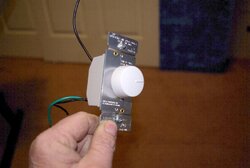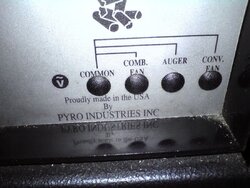I have had this stove for a while and the combustion fan stopped working or was working intermittently. So I saved up enough to finally replace it.
Yesterday I installed the new combustion blower and put everything back and it still will not turn on. Thinking I may have spent a bunch of money on a fan when I needed the low limit switch, I jumped the switch thinking that the combustion fan should come on (and stay on) with the switch jumped.
It still will not come on. What am I missing? If it is the control box it will be fatal, so I am hoping that there is something I am missing.
In addition the auger motor/and auger seem to be on the whole time (vs. the intermittent - when the little red light comes on) I am hoping this is not a related symptom. We love the stove but I am finding the justification for a pellet stove economically to be challenged with the expense of the electronics.
Thanks in advance.
Yesterday I installed the new combustion blower and put everything back and it still will not turn on. Thinking I may have spent a bunch of money on a fan when I needed the low limit switch, I jumped the switch thinking that the combustion fan should come on (and stay on) with the switch jumped.
It still will not come on. What am I missing? If it is the control box it will be fatal, so I am hoping that there is something I am missing.
In addition the auger motor/and auger seem to be on the whole time (vs. the intermittent - when the little red light comes on) I am hoping this is not a related symptom. We love the stove but I am finding the justification for a pellet stove economically to be challenged with the expense of the electronics.
Thanks in advance.


 This is playing with 120 volt AC which if you do not know what you are doing or are not careful can kill you WARNING
This is playing with 120 volt AC which if you do not know what you are doing or are not careful can kill you WARNING

